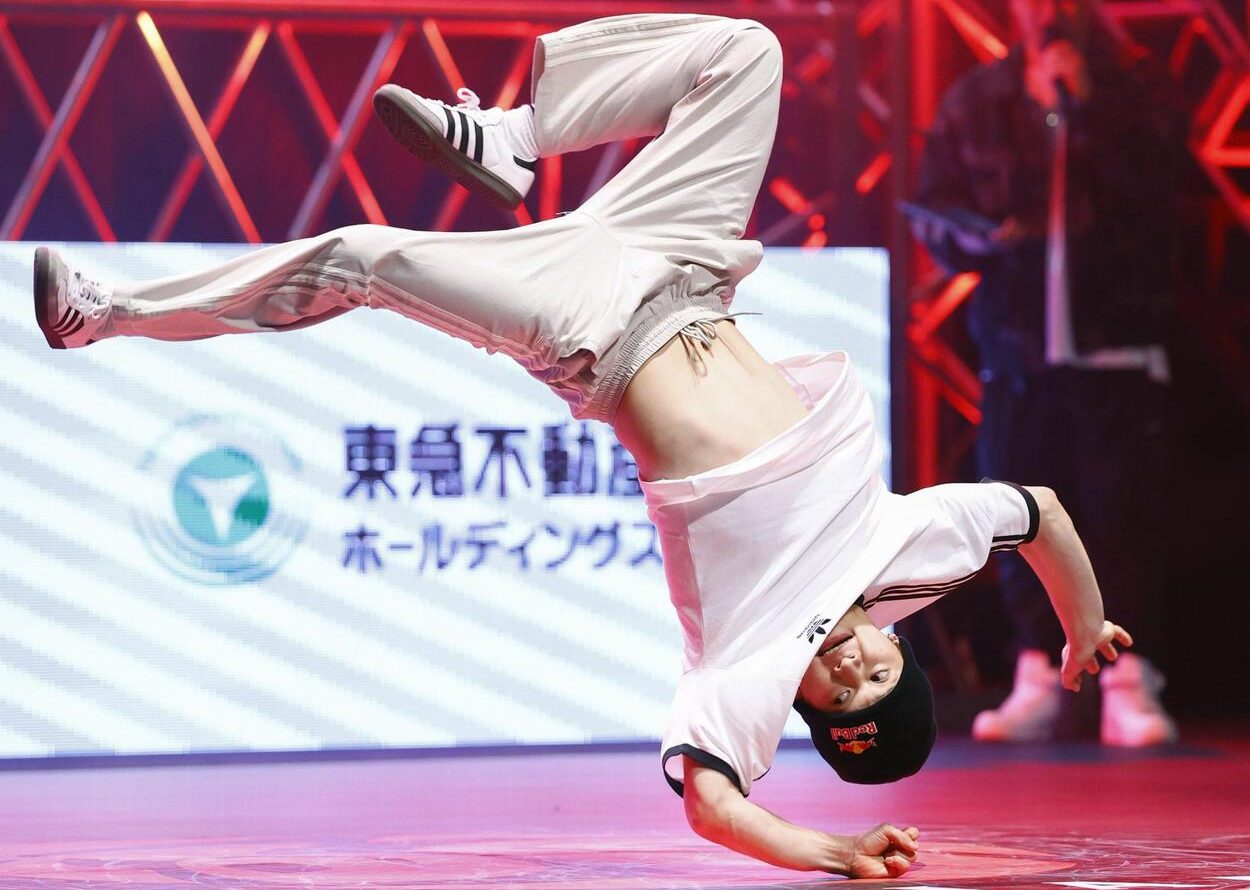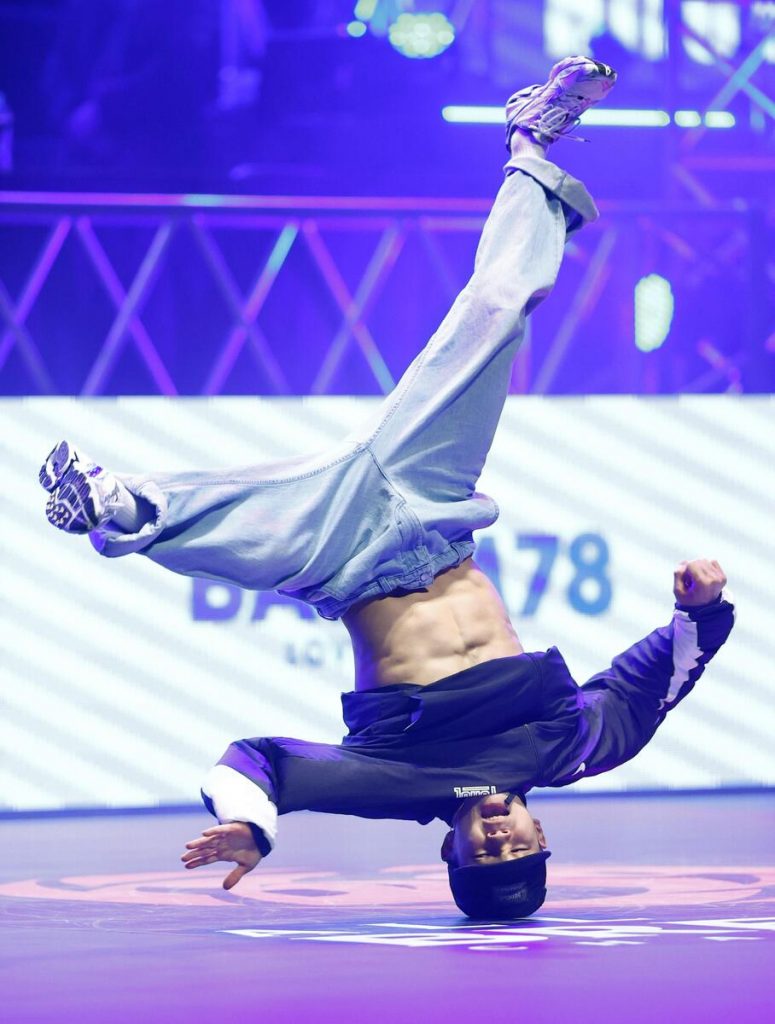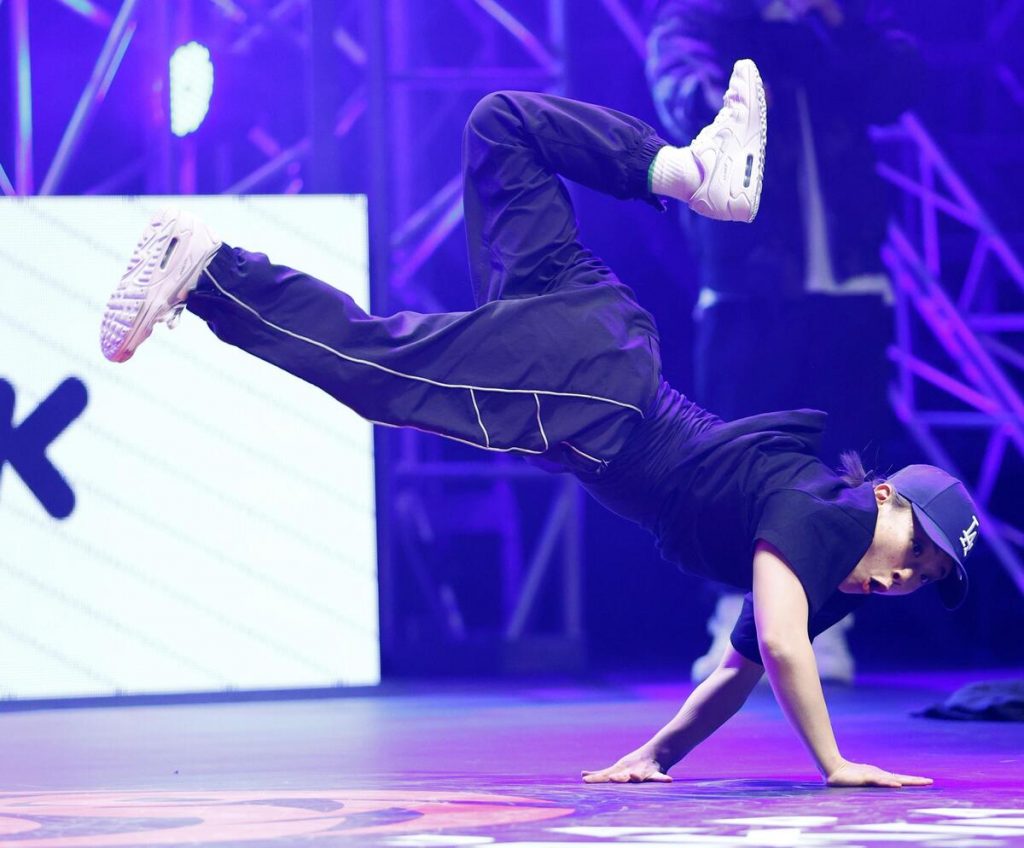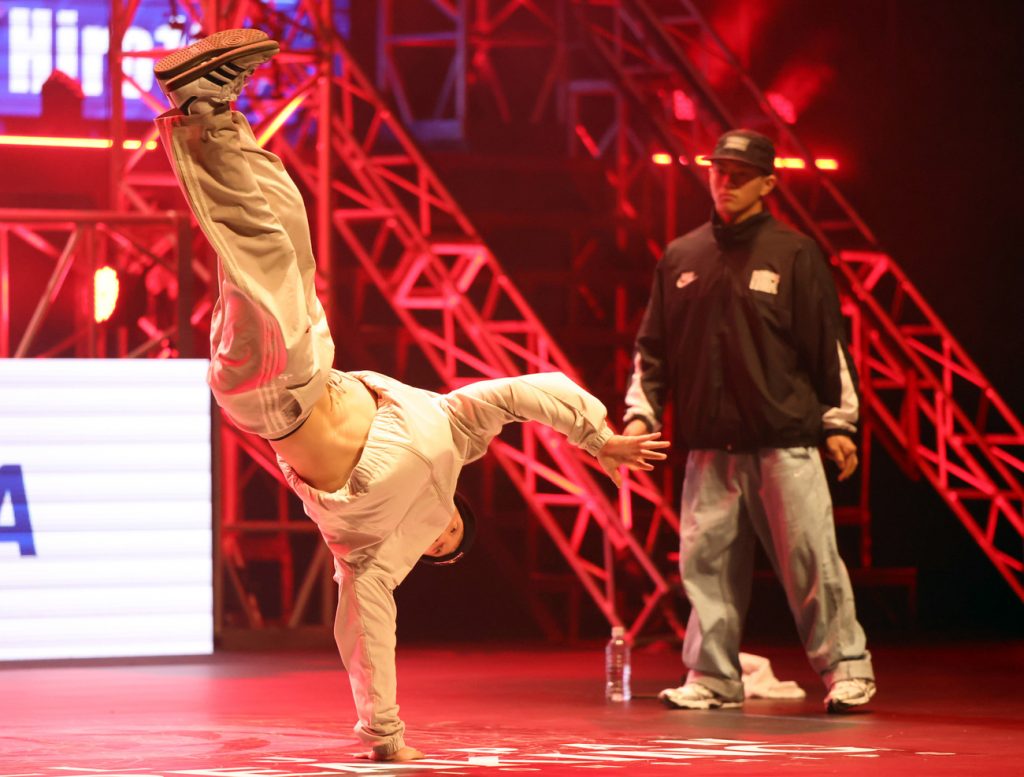
Breakdancer Isshin Hishikawa bolstered his Paris Olympic prospects with a dazzling performance on Sunday, February 18 at the All Japan Breaking Championships.
After beating favorite Shigeyuki Nakarai in the semifinals, Hishikawa, who goes by the name Issin, took advantage of innovative spins and jumps to defeat Hiroto "Hiro10" Ono 3-0 in the final at NHK Hall and claim his first All Japan title.
Nakarai, known as Shigekix in the breakdancing community, is the only Japanese dancer to so far qualify for the Paris Games after taking the gold medal at the Asian Games in October 2023.
Issin is almost certain to join Shigekix as one of three Japanese men when breaking makes its debut at the Olympics this summer.
"I enjoyed it very much today," said the 18-year-old Issin after Sunday's final. "All the practice is paying off and I will do my best to qualify for the Olympics."
Olympic trials will run through June. At the end of the process, 16 athletes will compete over two days at Paris' iconic Place de la Concorde.

Chasing a Dream: Aiming for Olympic Glory
Issin, a native of Okayama Prefecture, started breaking at the age of 8. He quickly mastered the windmill move and is now widely regarded as one of Japan's top breakdancers.
In the women's competition, 40-year-old veteran Ayumi Fukushima used her impressive footwork and spins to defeat Ayane Nakarai, Shigekix's older sister who goes by the mononym Ayane, 2-1 and claim her third straight All Japan Championship title.
"I let it all out in the final," Ayumi said. "I'm very happy to have won the championship, but know I have a lot of work to do ahead of Olympic qualifiers."

Breaking to Make Olympic Debut in Paris
The IOC announced four years ago that breaking would become an official Olympic sport.
In trying to appeal to a younger audience, the Paris organizing committee has included breaking along with skateboarding, sport climbing and surfing to the program for the 2024 Summer Games.
Breakdancing originated in New York City in the late 1960s and early '70s. It incorporates moves from a variety of sources including martial arts and gymnastics.
Largely improvisational, it is an energetic form of dance that includes stylized footwork and athletic moves such as back spins or head spins.
It is meant to convey the rough world of city streets from which it is said to have sprung. It is tied to the birth of hip-hop, whose DJs developed rhythmic breaks for dancers.
In competition, breakers go up against each other in a one-on-one battle and take alternate turns or throw downs to perform their routines.
One battle is called one round. In principle, each throw down must be no longer than 60 seconds.
Judges score the battles on various criteria, including personality, creativity, variety and technique.

Breaking 101
There are basically four primary elements that form breaking, or breakdancing: toprock, downrock, power moves and freezes.
Toprock: This generally refers to any string of steps performed from a standing position. Transitions from toprock to downrock and power moves are called "drops."
Downrock: This is used to describe any movement on the floor with the hands supporting the dancer as much as the feet.
Power moves: These are acrobatic moves that require momentum, speed, endurance, strength, flexibility and control to execute. Some examples are the windmill, swipe, back spin and head spin.
Freezes: These are stylish poses that require the breaker to suspend himself, or herself, off the ground using upper body strength. They are used to emphasize strong beats in the music and often signal the end of a set.

Author: Jim Armstrong
The author is a longtime journalist who has covered sports in Japan for over 25 years. You can find his articles on SportsLook.

Nagoya Basho Tournament Records
| Day | Opponent | Result |
|---|


















You must be logged in to post a comment Login